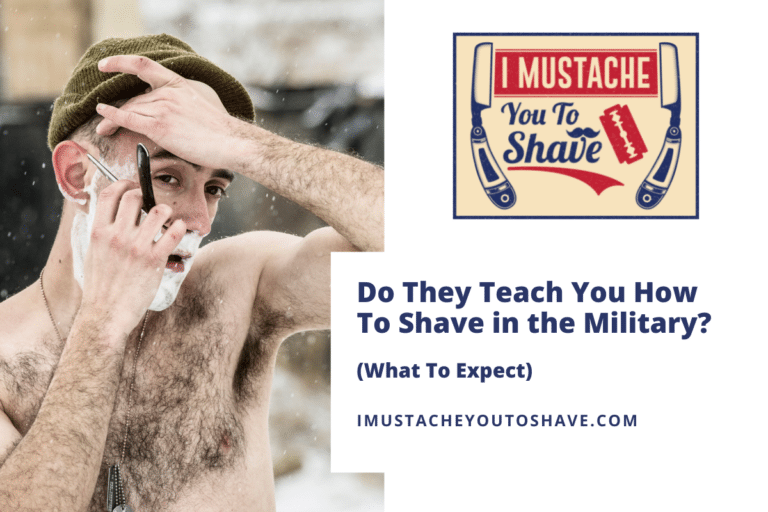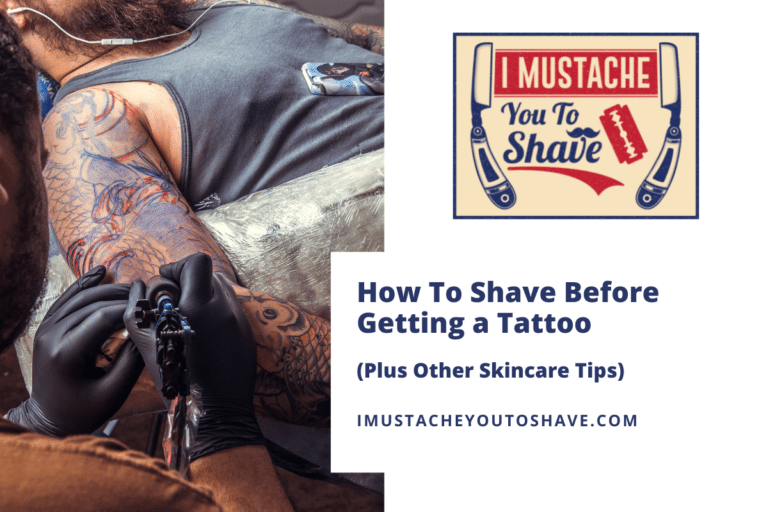What Makes a Safety Razor Safe? (And How They Work)
After shaving for decades with multiple blade cartridge razors, I decided to take a serious look at safety razors. Are they actually safe?
The low barrier to entry to using safety razors is a stark contrast to the level of skill required to use a straight razor. Safety razors require less skill because the blades are replaceable and include a guard over the blade. They also have an easy-to-use handle which allows for a mild shaving angle giving the user a close shave without the risk.
Keep reading to learn more about the safety razor, including how it can give you a closer shave while being more eco-friendly than a disposable razor or cartridge.
Why are safety razors safe?
Modern disposable or cartridge razors usually have multiple blades, increasing irritation while shaving. On the flip side, a double-edge safety razor has a significantly stronger and sharper high-quality steel blade than a disposable or cartridge razor, and as such requires fewer passes while shaving, giving a closer shave with less pain and irritation.
Safety razors are so named because they are less likely to damage the user than a traditional straight razor, which is essentially an exposed blade. Straight razors require a lot of practice not just in shaving, but also in sharpening after they become dull, so safety razors give the same quality close shave with significantly less risk.
Armed with this knowledge, you might be asking yourself, where did safety razors even come from and how long have they been around?
A brief history of safety razors
On the Rue de la Tixeranderie “at the sign of the Golden Blade” in Paris, France, a master cutler (or knife maker) devised a Rasoir à Rabot, or “razor with plane.”
Jean-Jaques Perret drew his invention in 1769 which depicted a guard fitting over the blade of a standard folding straight razor. Smooth with no teeth and supposedly made out of wood, the guard was devised to mimic a carpenter’s plane.
The first known patent was filed in 1880, which illustrated a handle with a removable blade. It wasn’t until King Camp Gillette (yes that Gillette) was granted a patent for a double-disposable blade in 1904 and subsequently awarded the contract to supply American troops in World War I that the safety razor became popularized.
Over the next hundred years, Gillette would compete with Wilkinson Sword’s stainless steel, and eventually disposable, blades through the ’60s. Bic appeared in 1974 and introduced the disposable safety razor. Since then, cartridge razors took over the scene, but safety razors have stuck around as the safest method to getting the closest and cleanest shave.
How does a safety razor work?
You have your first safety razor fresh out of the box and need some pointers on how to use it.
To set up a double edge safety razor:
- The head comes in two pieces, a top and a bottom, that screws into the handle. Some razors come disassembled, others assembled. We want it disassembled.
- Carefully grab your double edge blade and place it in the top of the razor guard using the holes as guides.
- Place the bottom of the razor head on the blade.
- Screw the handle in the bottom (NOTE: Skip this step obviously if your head only comes in two pieces).
Now that we have an assembled safety razor, how do we use it?
Performing a wet shave with a double edge razor:
- Find the direction your facial hair grows, called the grain.
- Either shower or apply a hot towel to your facial hair to soften it up.
- If applicable, use facial cleanser and scrub at this point.
- Use a wet badger hair shave brush to apply your choice of shave soap or cream (a lot of folks say softer badger hair is ideal, but in my experience, it really doesn’t make a significant difference).
- Starting with just under the sideburns, begin shaving with the grain with short straight strokes, holding the razor at a 30-degree angle (REMINDER: the head of a straight razor doesn’t pivot, so you’ve got to be intentional about where you’re shaving).
- The weight of the straight razor should be doing the work, let the blade just glide across your skin. Applying too much pressure increases risk of abrasion or razor burn.
- Once finished, splash cold water on the skin to close pores and apply about a dime’s size of aftershave to the skin for tone and to reduce irritation.
What should you look for in a safety razor?
If you’re considering trying out a safety razor, it can be intimidating picking out the one that’s right for you.
When considering a safety razor there are five fundamentals to consider and make choices on:
- head style
- complexity
- handle length
- weight
- aggressiveness
Head Styles
The head of your razor is where the blade is housed.
There are three main options for head styles for your safety razor:
- Closed – Closed head razors are more traditional and have a straight safety bar along the edge of the blade.
- Slanted – Similar to the closed head razor, the slanted head has a straight bar instead of a straight one.
- Open comb – These razors have teeth to remove less lather, though it is considered a more aggressive design. The facial hair is also raised with the motion of shaving and guided to the blade for a more even shave.
Complexity
The more complex the head, the longer your razor’s longevity, but it may be more time-consuming or difficult to clean and maintain.
Safety razor heads come in:
- 2 pieces – In a two-piece head, the cutting head screws down through the hole in the razor and directly into the handle. The advantage to this design is that it minimizes the users direct contact with the razor blade.
- 3 pieces – Three-piece razors feature heads that are separated into top and bottom pieces; the razor blade is placed between them. These razors are the most popular option because they are so easy to clean and maintain.
- Butterfly – A butterfly (or one-piece) head twists and opens from two hinges to expose the blade when its time for a replacement.
Handle Length
Be thinking about what’s comfortable as far as handle length. Does it feel right or does it feel like it’s going to fall out of your hand?
Handle length could make the difference between an even smooth shave and an uneven abrasive shave. Choose between:
- 80mm – This shorter handle length allows for greater control and is the better choice for beginners.
- 100mm – Many users prefer the longer handle because it’s easier to grip and manuever for a detailed shave.
As with most elements of the safety razor, this is a matter of personal preference and you may want to test both lengths before making a decision.
Weight
The weight of the razor is also a big factor since you mostly use the weight of a razor to help with the shave.
Some say that heavier razors give them more control, but it’s really subjective to what feels right to you.
So weigh a few options when shopping for a razor.
Aggressiveness
The last thing to consider is how aggressive you want your blade to be.
Aggressiveness is an important factor to consider based on your experience with shaving generally or with a safety razor, how close a shave you need, the sensitivity of your skin, and the thickness of your beard.
Since it’s such an important facet, let’s go a little more in-depth about aggression in razors.
What makes a safety razor aggressive?
As you may well have guessed, decades of ingenuity and innovation have turned the minutiae of the relationship between the safety bar and the blade into a science. Sometimes synonymous with “efficiency,” aggressiveness in a razor is based on several factors.
Things to consider are the blade gap between the blade and the guard, the angle of the blade in relation to the cap or bar, and the exposure of the blade. Most safety razors are fixed, but some are built to adjust the angle of the shave.
Safety razors are rated on a scale of mild, moderate, and highly aggressive. Razors with mild aggressiveness have a smaller blade gap and smaller shorter exposure of the blade with a wider safety bar. Razors with high aggressiveness have a larger blade gap and greater exposure of the blade requiring fewer strokes.
Beginners will want to stick to mild aggressiveness when starting, but a moderate or aggressive razor might be more suited to your needs if you have very thick beard stubble.







